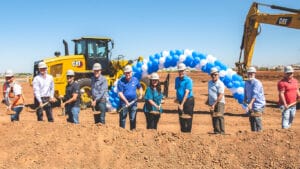Ten years ago, the Urban Land Institute published Ten Principles for Successful Public/Private Partnerships. That publication set forth core principles essential for successful accomplishment of joint development by the public and private sectors, benefiting both, that neither could achieve independently. Those ten principles remain as applicable today as they were then, but the challenges facing urban development have changed dramatically.
 In 2005 and 2006, the real estate market in Arizona and throughout the country was booming and numerous examples of successful public/private partnerships (PPPs) were evident. The recession that began in 2008 brought most real estate development to a halt, caused capital markets to dry up, precipitated bankruptcies and left governments at all levels financially stressed.
In 2005 and 2006, the real estate market in Arizona and throughout the country was booming and numerous examples of successful public/private partnerships (PPPs) were evident. The recession that began in 2008 brought most real estate development to a halt, caused capital markets to dry up, precipitated bankruptcies and left governments at all levels financially stressed.
Five years ago, 42 states had budget shortfalls totaling $103 billion and a National League of Cities survey noted 60 percent of the nation’s communities delayed or canceled capital projects due to fiscal conditions. Although economists say the recession technically ended in June 2009, the trough was so deep that even today recovery is not complete. Markets in some regions across the country have recovered completely, while others are still struggling.
PPPs have become critical to enabling the transformations that are taking place in our urban environment in both primary and secondary markets.
No one said PPPs were easy. Globally, less than 15 percent of government expenditures are allocated towards PPPs. But as communities face the challenges of aging infrastructure, stimulating job creation, creating opportunities for affordable housing, improving access to high-quality education and healthcare, and fostering economic competitiveness, the people and places focusing toward creative alliances and collaborative action are taking control of their destinies and effectively using the resources and skills of all sectors to shape development.
PPPs are a critical vehicle for accomplishing key community development objectives with regard to real estate development and redevelopment, infrastructure and public facilities, and monetization of existing public assets for public benefit. These partnerships tap the expertise, tolerance for risk and financial resources of the private sector to help achieve public goals. However, they are complex, and the public and private sectors approach such transactions with different skills, concerns and perspectives.
The vision guiding a PPP must be subscribed to by key stakeholders, including elected officials, the developer and neighbors, as well as civic, philanthropic and business leadership. The developer, “community” and government must have a common vision and compatible goals. A shared vision that is created and embraced by key stakeholders will stand the test of time and will persevere through implementation.
Successful PPPs fuse market potential, physical reality and community goals. This success breeds confidence, and confidence breeds trust. Unlimited opportunities exist to be inspired by those who are passionate about improving the places where we live, work and play, and tapping into innovative and creative alliances that get it done.




